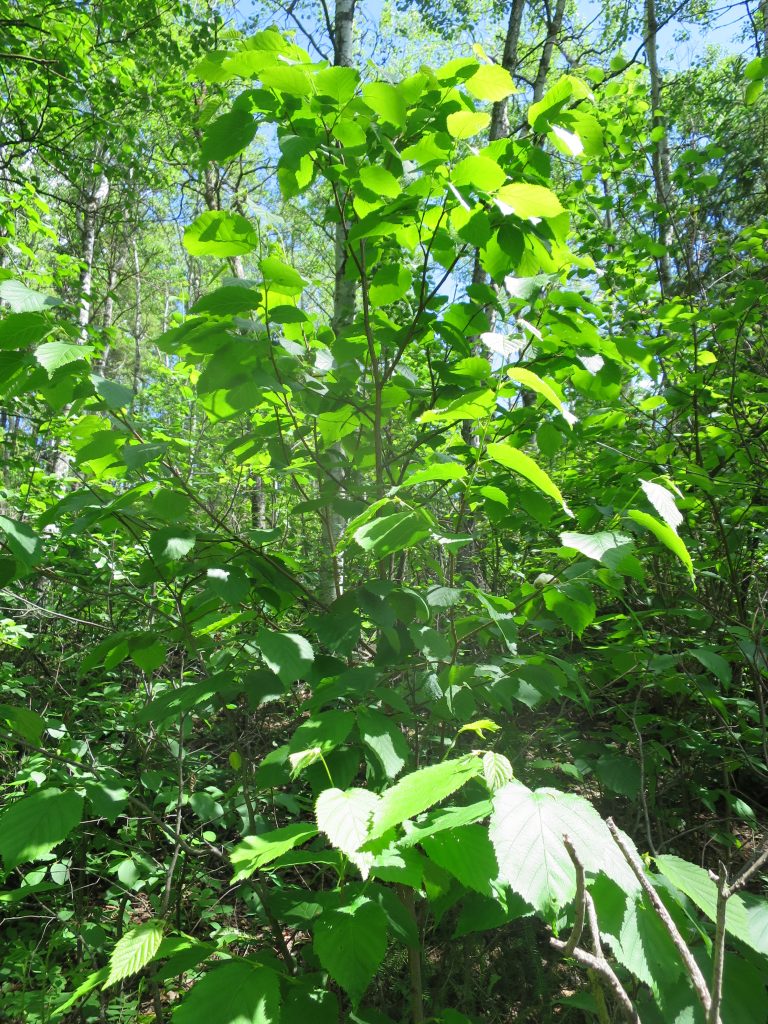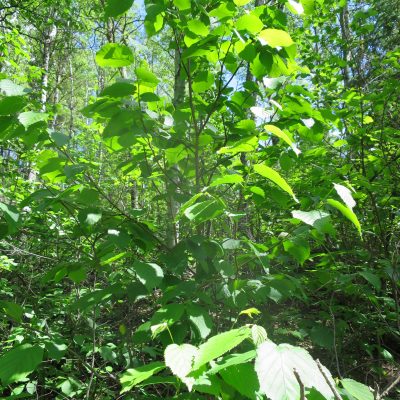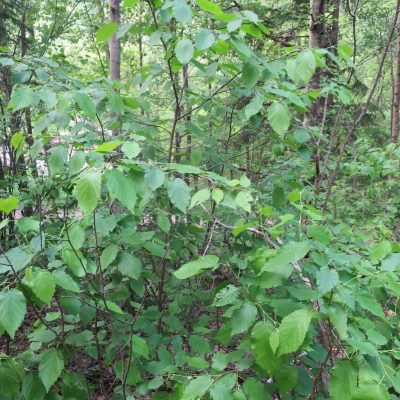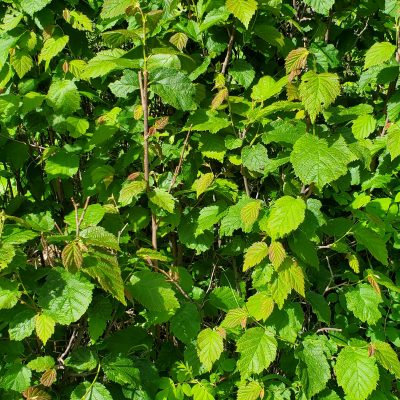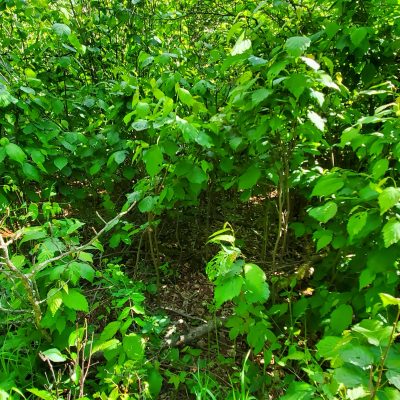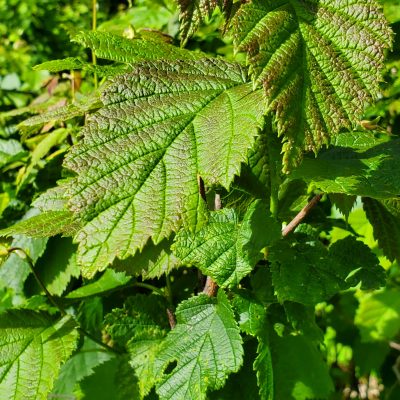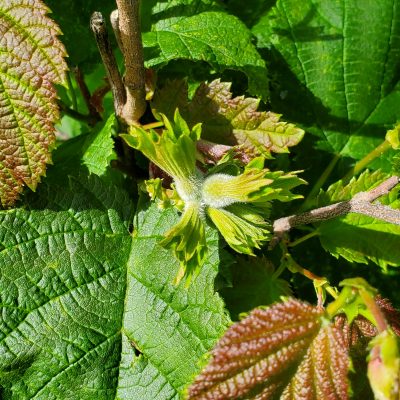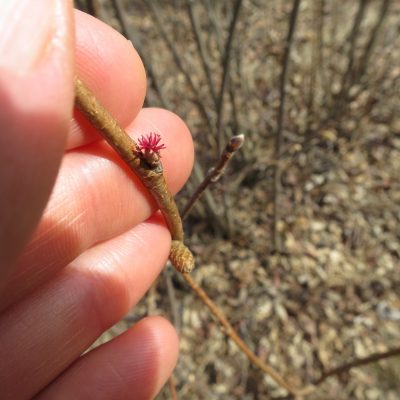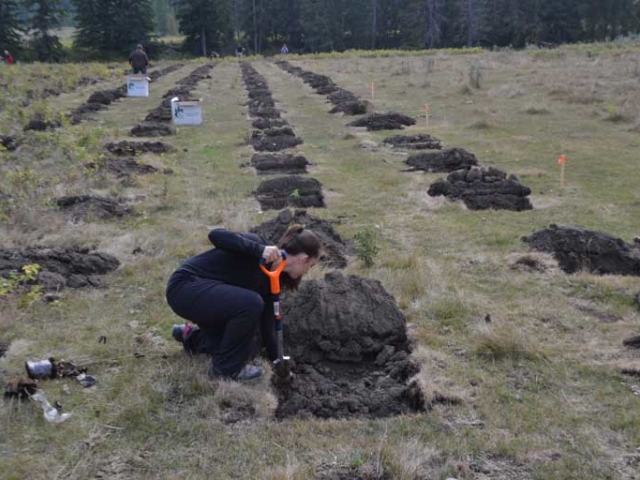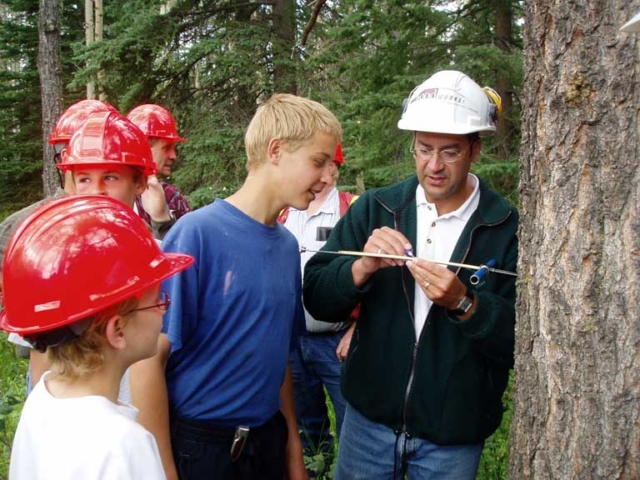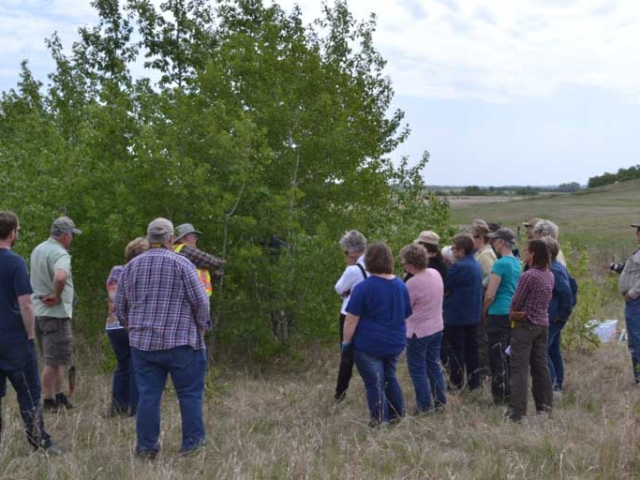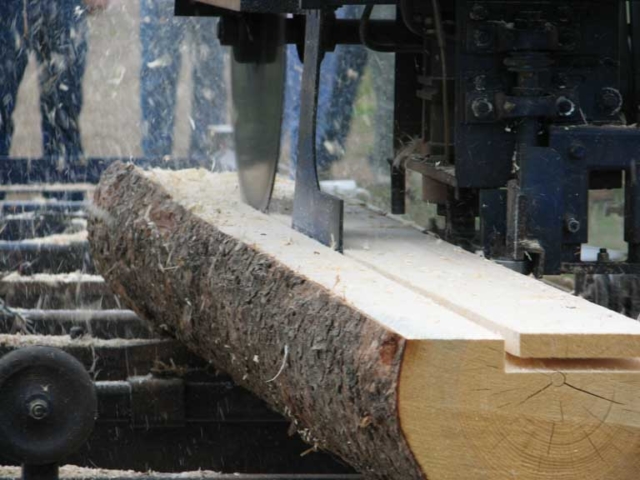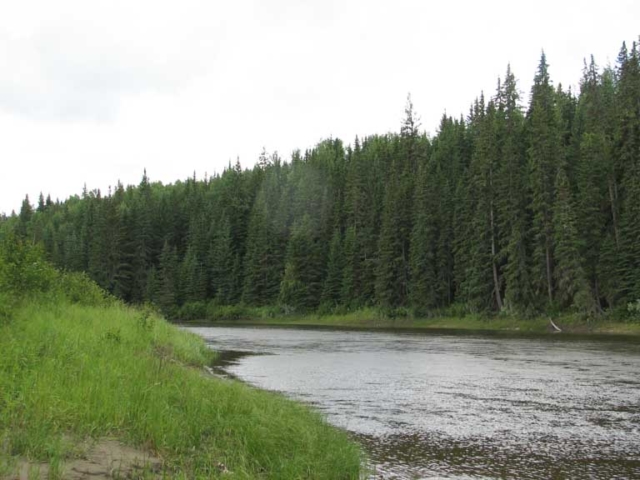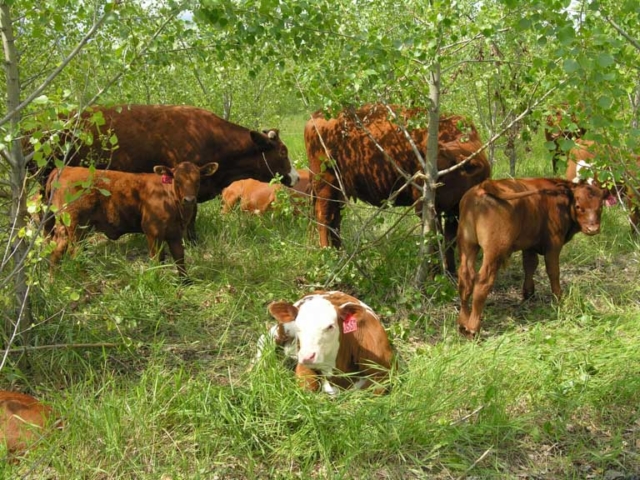Description / Details
Beaked hazelnut (Corylus cornuta)
Alberta’s only native nut producing species is a tall, fast-growing shrub that can sucker into dense patches. Beaked hazelnut produces best in full sun but can also grow well in the partial shade of forest understories. It is adaptable to most soil types north and west of the grasslands but will not tolerate prolonged drought or annual flooding.
Beaked hazelnut flowers are among the earliest to emerge but are wind pollinated, meaning they do not provide high quality pollen or nectar resources for pollinators. The hazelnuts themselves are typically ripe by October, and are delicious although smaller than typical store-bought hazelnuts. However, they often are eaten or stashed away by squirrels or birds before they fully ripen. Beaked hazelnut’s ability to sucker and its wildlife value make it a valuable and common addition to Eco-Buffers north or west of the grasslands. It is also recommended for food forests and along the upland edges of riparian buffers.

